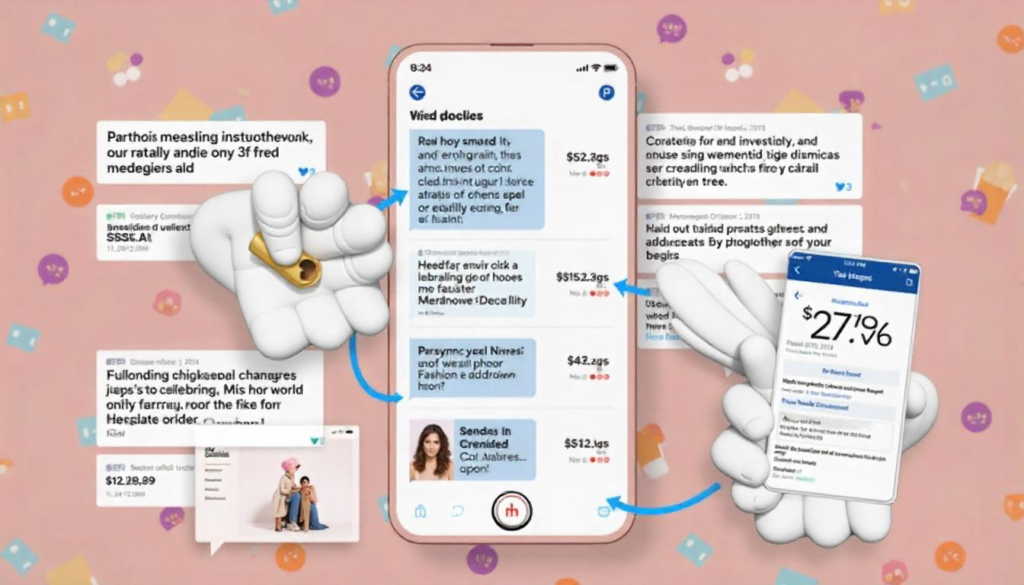Why Messaging Apps Are the New Goldmine for Advertisers

Messaging apps have evolved far beyond simple tools for communication. In 2025, platforms like WhatsApp, Messenger, Telegram, and WeChat are becoming prime digital real estate for advertisers looking to connect with consumers in more intimate, data-rich environments. With billions of users worldwide and highly personalized interaction histories, messaging apps are now central to the future of targeted advertising.
1. The Shift from Social Feeds to Private Messaging
Traditional social media platforms like Facebook and Instagram are seeing a plateau in user engagement, especially among Gen Z and younger millennials. These audiences are gravitating toward private, real-time communication apps where they feel more in control of their digital presence.
Key reasons for this shift:
- Growing concerns about data privacy in public feeds
- Rise of community-centric features (e.g., channels, group chats)
- Preference for direct, real-time interaction
This migration is prompting brands to rethink their advertising strategies, no longer relying solely on public timelines but tapping into the nuanced behavior within private messaging ecosystems.
2. Why Messaging Apps Offer Prime Advertising Potential
Messaging apps offer an unparalleled blend of scale, engagement, and contextual data. These platforms are rich with behavioral insights that allow brands to target users with surgical precision.
Here’s what makes messaging apps especially attractive to advertisers:
- High user retention: People open messaging apps multiple times a day.
- Personalized touchpoints: Messaging environments offer more emotional, 1:1-like brand experiences.
- Rich metadata: From device type and language to geolocation and interaction patterns.
Cross-platform synergy: Many apps are linked to social networks, amplifying behavioral targeting capabilities.
As user attention becomes more fragmented, messaging apps present a cohesive, high-engagement channel where ads feel more native and less disruptive.
3. WhatsApp and Meta’s Deep Integration: A Case Study
WhatsApp, the most widely used messaging app globally, is a prime example of how messaging platforms are being transformed into advertising powerhouses. With over 2 billion active users, WhatsApp has begun testing personalized ad placements in a way that respects chat privacy but leverages cross-platform behavioral data.
News:
Apfelpatient reports that WhatsApp is launching personalized advertising in its “Aktuelles” tab, using user data such as language, region, and followed channels, and, for users linked to Facebook or Instagram, broader behavior from Meta’s platforms. Although private chats remain untouched, this integration raises privacy concerns, prompting users to review their Meta account settings if they want to limit tracking.
This model signals a powerful shift in Meta’s strategy, combining messaging intimacy with social data to deliver hyper-targeted ads, while still walking the tightrope of user trust.
4. How Brands Are Monetizing Messaging Touchpoints

Brands across industries—from fashion and retail to fintech—are creatively engaging audiences via messaging apps, without relying on traditional display ads.
Examples of effective use cases include:
- Chatbots for eCommerce: Guiding purchases through automated customer service.
- Interactive polls and surveys: Gathering zero-party data for personalization.
- Exclusive content drops: Delivering early-access offers to loyal subscribers.
- Shoppable messages: Letting users buy directly from conversations.
Luxury brands, in particular, are finding fertile ground in messaging apps. One standout approach is through wearables and connected fashion, where digital assistants link directly to branded channels for real-time updates.
In this context, the rise of luxury wearable senseable vogue highlights how fashion tech brands are blending style and smart communication to tap into affluent, mobile-first consumers. These wearables often integrate with messaging platforms to provide push notifications for product drops, personal styling alerts, and more, creating an immersive experience that goes far beyond traditional advertising.
5. Regional Trends and Cultural Nuances
The success of messaging app advertising also depends heavily on regional usage patterns. For instance:
- WeChat in China combines messaging, payments, and commerce in one app, making it an end-to-end marketing platform.
- LINE in Japan is used for everything from stickers to appointment scheduling.
- Telegram in Eastern Europe offers ad space in public channels with minimal moderation, appealing to brands that prefer fewer restrictions.
Understanding these cultural and behavioral nuances helps global marketers craft campaigns that resonate deeply within each market.
6. The Privacy Trade-Off and User Trust
As messaging apps move deeper into ad monetization, the balance between personalization and privacy becomes critical. While users appreciate tailored experiences, they’re also increasingly wary of how their data is used.
Key considerations for advertisers:
- Transparency in data usage policies
- Opt-in experiences and permissions
- Offering value (e.g., exclusive deals) in exchange for engagement
- Ad formats that blend seamlessly into the app’s native environment
Apps that prioritize user consent and value exchange are more likely to build sustainable ad ecosystems without alienating their audiences.
7. What the Future Holds: AI, Personal Assistants & Contextual Ads
Looking ahead, AI-driven assistants and predictive messaging will further revolutionize the ad landscape within messaging apps. These smart systems can anticipate needs, trigger offers based on user intent, and provide real-time support that feels more like a service than a sales pitch.
Expect innovations such as:
- Sentiment-based ad delivery
- Contextual product suggestions during chats
- Embedded voice ads within conversational interfaces
- Integration with AR wearables and smart devices
This evolution underscores why messaging apps are not just another ad platform—they’re a foundational layer in the next era of immersive, data-enriched marketing.
Conclusion
Messaging apps are no longer just communication tools—they’re highly potent platforms for meaningful, data-driven engagement. As Meta and other tech giants continue pushing the boundaries of what’s possible within these ecosystems, advertisers must adapt fast to stay ahead. The key to winning in this new goldmine? Embracing personalization without compromising trust.





